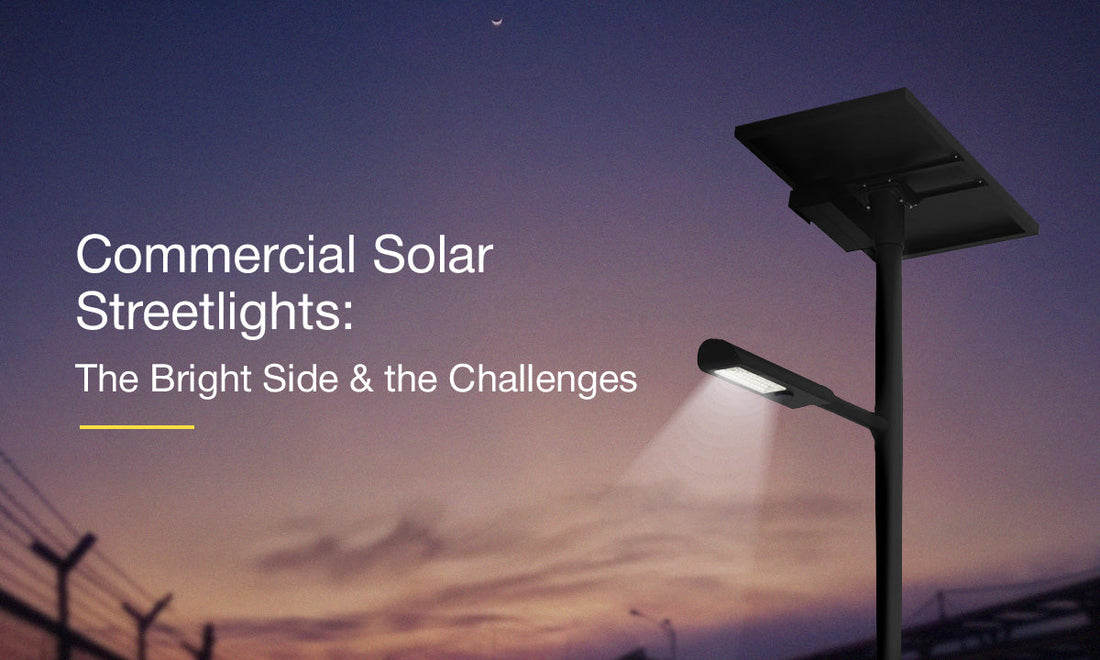
Commercial Solar-powered LED street lights: Benefits, Challenges, and What to Expect
We all know what commercial solar street lights are and why they are needed. But is solar lighting all that great for commercial purposes? Let’s explore its benefits and the not-so-good side of it to consider its applicability.
Benefits and challenges of commercial solar street lights
Advantages of Commercial Solar Street Lights |
|
|
Energy independence |
Solar street lights offer energy independence in areas where grid reliability might be a concern. They operate even during power outages. This is especially crucial for public safety and security. |
|
Reduced electricity cost |
No reliance on the grid means no electricity bills. This is a significant long-term cost-saving for commercial properties. |
|
Environmental friendliness |
Solar commercial lighting offers a clean energy source, reducing carbon emissions and contributing to a more sustainable environment. This is increasingly important in urban areas facing pollution challenges. |
|
Easy installation |
No trenching or wiring is required, making installation quick and cost-effective. This is beneficial in areas where digging and laying cables might be difficult or disruptive. |
|
|
This also means that the lights can be placed in remote locations where running power lines would be very expensive. |
|
Low maintenance |
Modern solar street lights require minimal maintenance, primarily battery replacements every few years. |
|
Enhanced safety |
Reliable solar lighting improves visibility and safety for pedestrians and vehicles, reducing the risk of accidents and crimes. |
|
Durability |
Modern commercial solar street lights are built to withstand various weather conditions, which is important for states that have heavy rains and cloudy climates. |
Disadvantages of Commercial Solar Street Lights |
|
|
Initial investment |
The upfront cost of commercial solar street lights can be higher than traditional grid-connected lights. |
|
Weather dependence |
Performance is affected by weather conditions. During prolonged periods of cloudy or rainy weather, especially during the monsoon season in specific cities, the batteries may not fully charge, potentially affecting the lighting duration. |
|
battery life and replacement |
Batteries have a limited lifespan and will need to be replaced periodically, adding to maintenance costs. |
|
solar panel efficiency and space |
The efficiency of solar panels can be affected by temperature and shading, which can be a concern in densely populated areas. |
|
|
Solar panels require a certain amount of surface area to gather sunlight, which might be a limiting factor in some locations. |
|
Risk of theft or vandalism |
Commercial solar lighting panels and batteries can be targets for theft or vandalism, especially in remote or poorly lit areas. |
While solar energy offers significant long-term benefits in energy independence and environmental impact, it’s crucial to acknowledge the initial investment and the challenges posed by weather variability. A thorough assessment of site-specific factors and a clear understanding of both the advantages and limitations are essential for successful solar energy integration.
